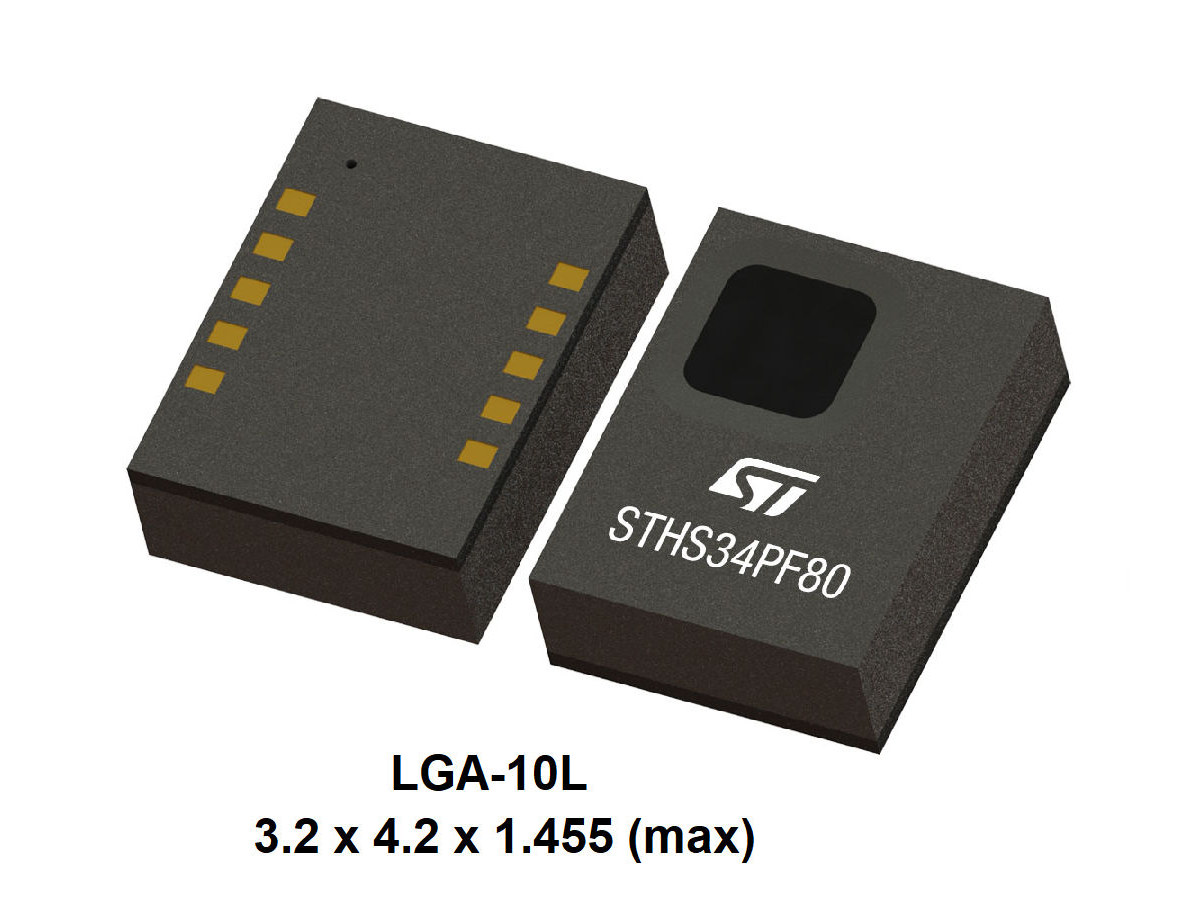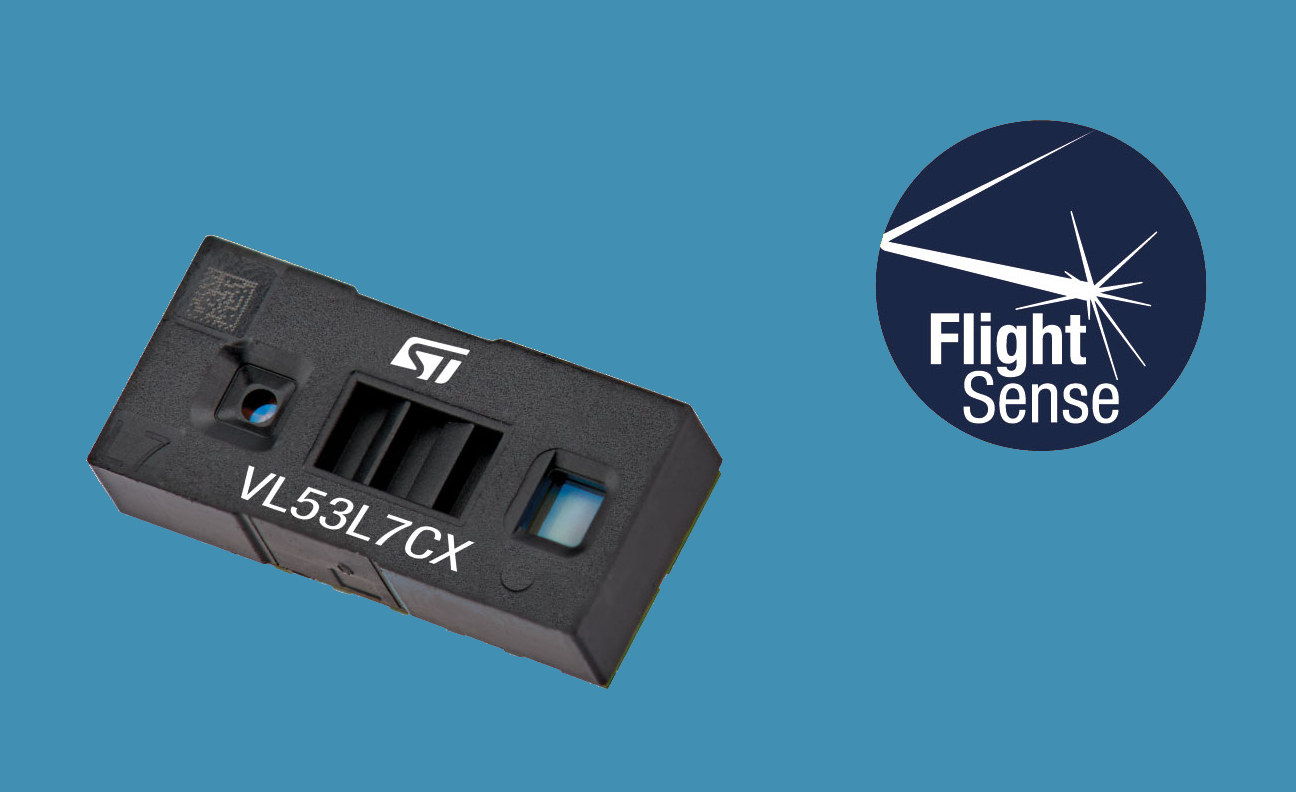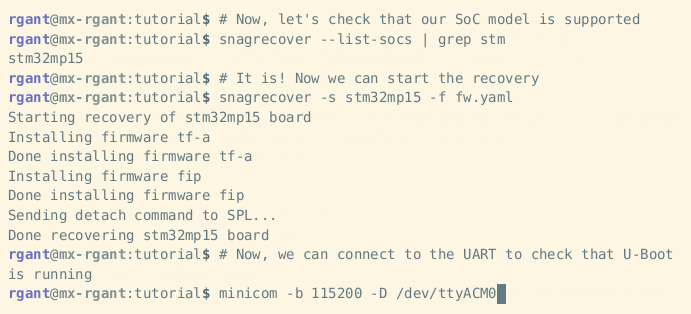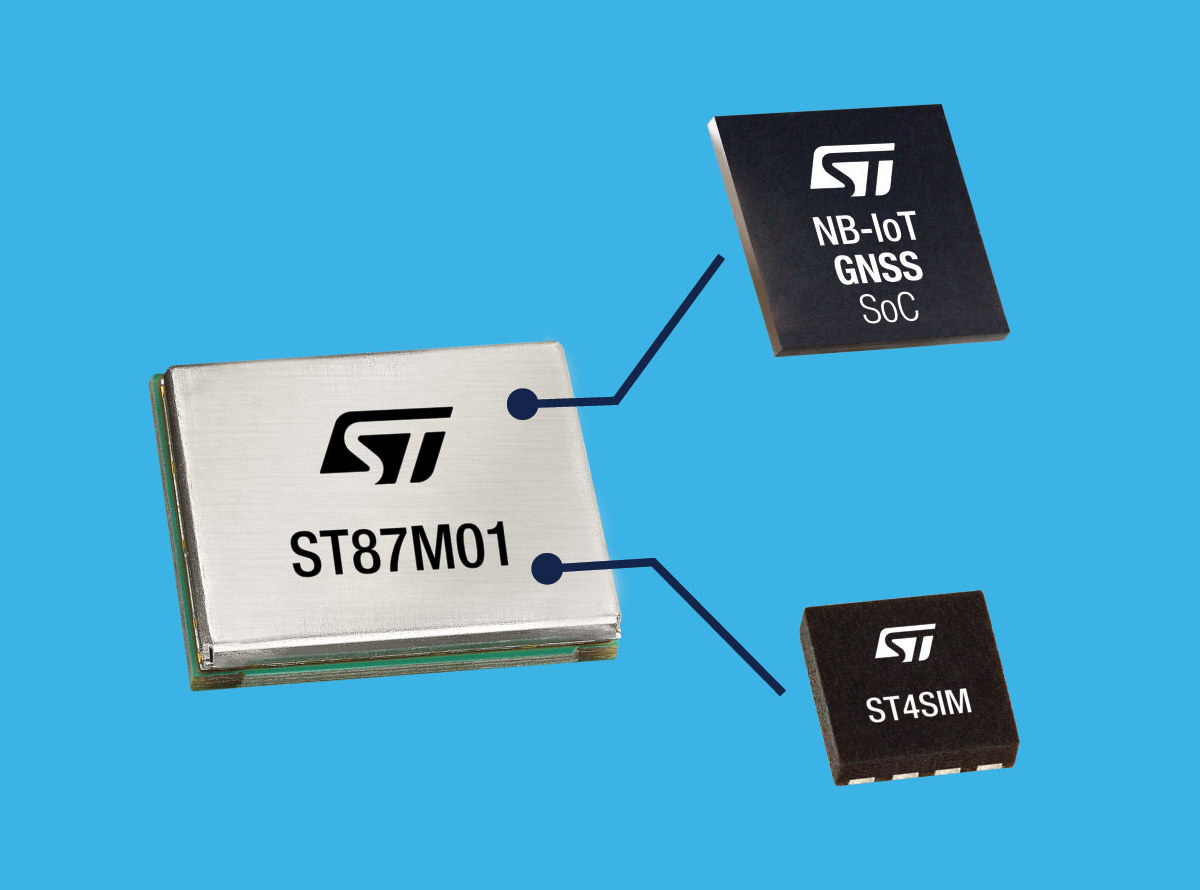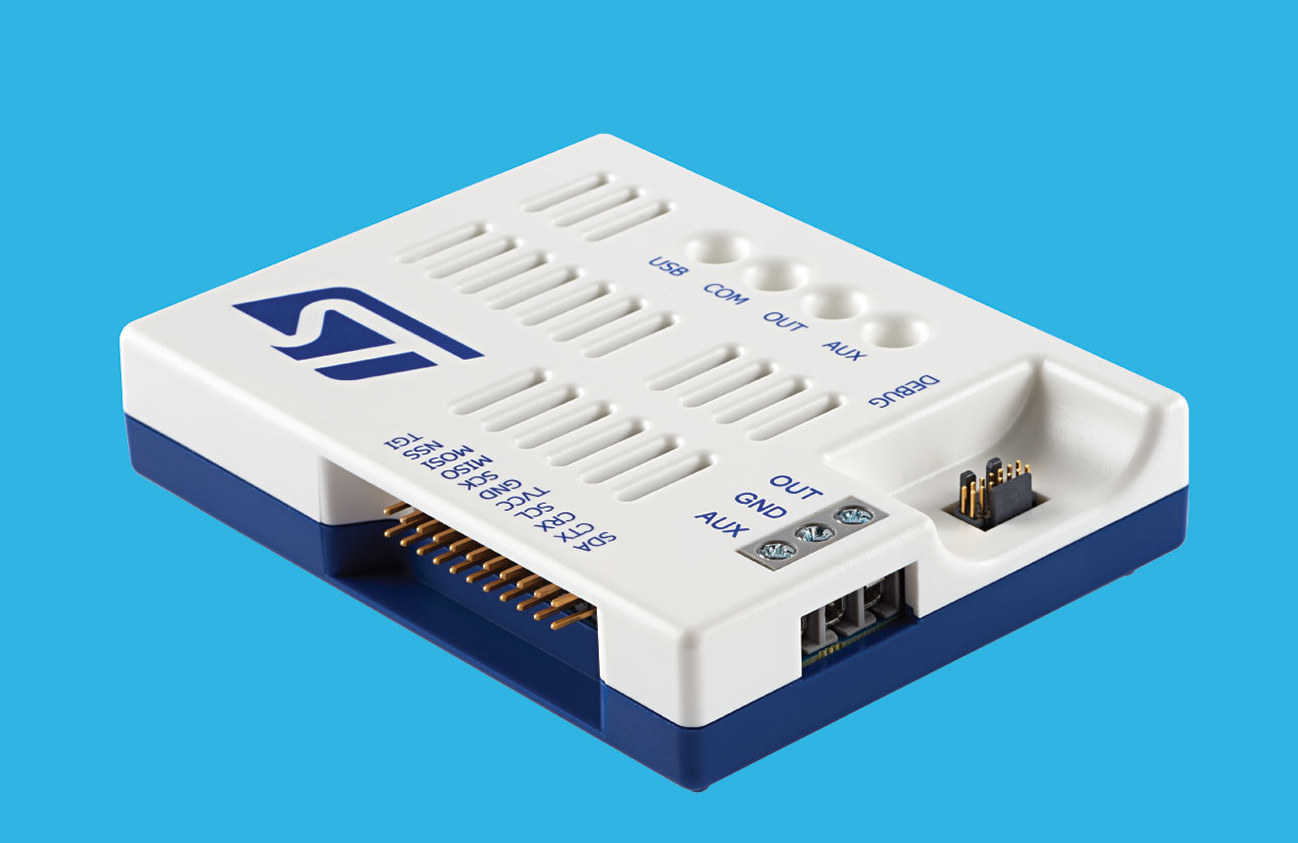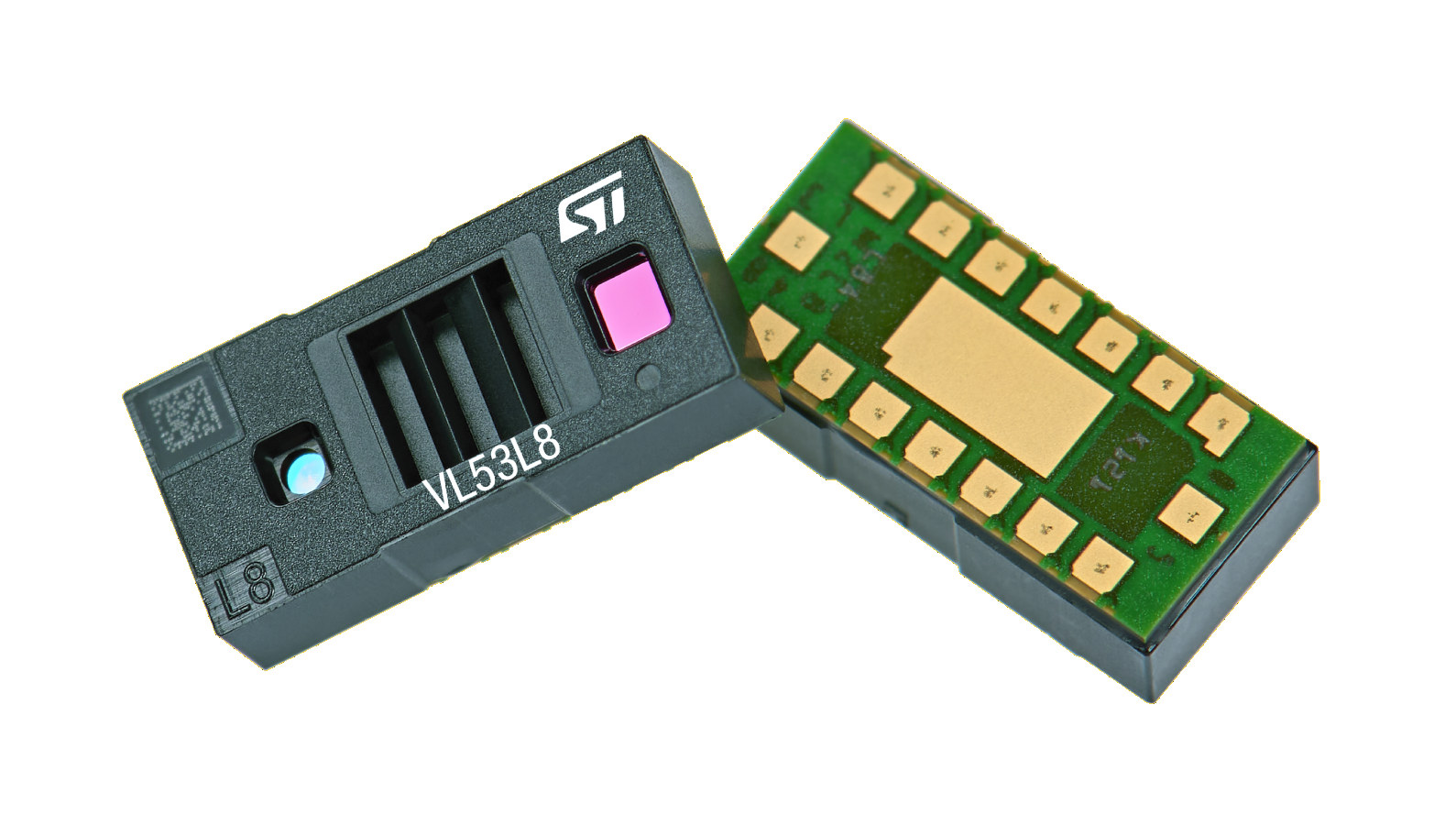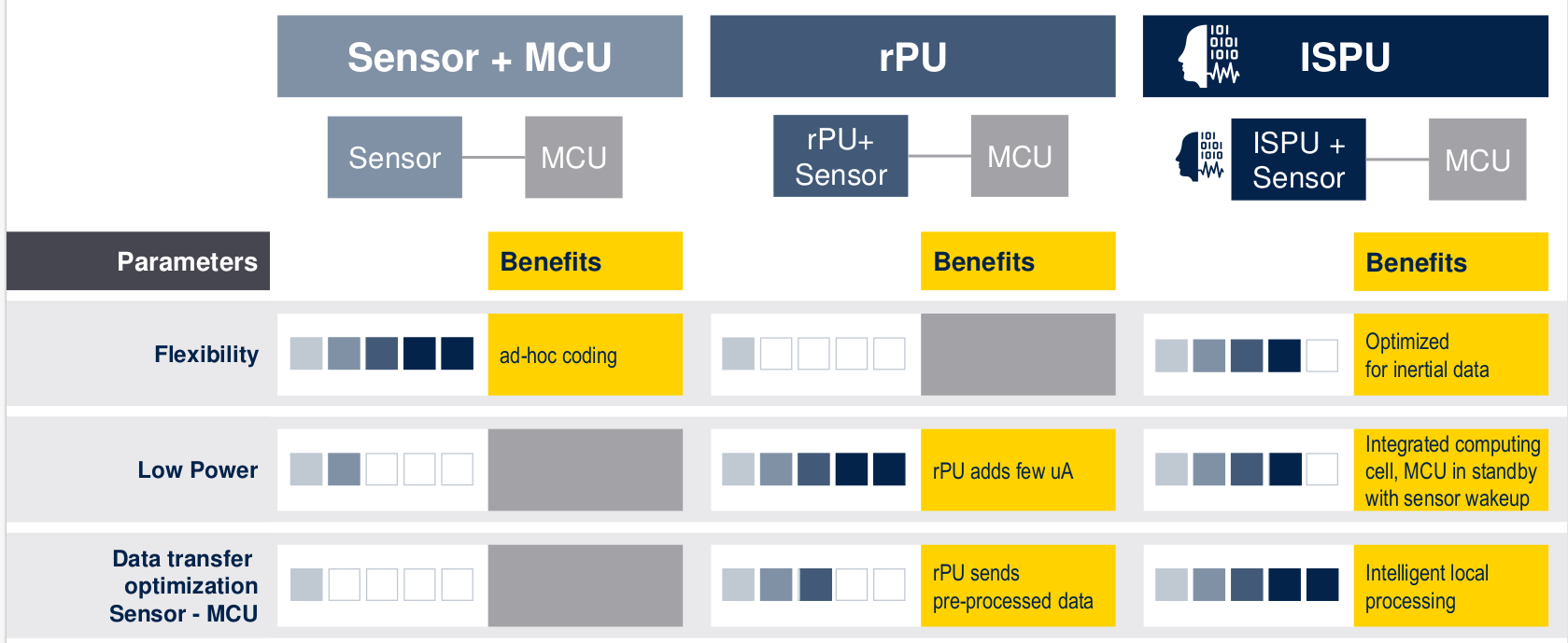STMicro STHS34PF80 is a new IR sensor designed for IoT and Smart Home devices requiring motion and/or presence detection that offers an alternative to traditional passive infrared (PIR) sensors and is mostly useful for building automation. The latest IR sensor from STMicro contains thermal transistors (MOSFETs) that can not only detect motion but also stationary objects, something that’s not feasible with conventional PIR detectors that require motion for object detection. The company further adds that PIR sensors need a Fresnel lens to sense moving objects, but the STHS34PF80 detector does not require a lens and as a result, enables much smaller designs. STHS34PF80 key features and specifications: Range up to 4 meters without lens for objects measuring 70 x 25 cm² Integrated silicon IR filter IR sensitivity – 2000 LSB/°C RMS noise – 25 LSBrms Operating wavelength – 5 µm to 20 µm Local temperature sensor accuracy – ±0.3 °C […]
VL53L7CX Time-of-Flight (ToF) sensor offers camera-like 90° field of view
STMicroelectronics VL53L7CX is the latest FlightSense multi-zone Time-of-Flight (ToF) distance sensor from the company with the main highlight between its camera-like 90° diagonal field of view, derived from a 60° x 60° field of view… This is a significant improvement over the 61° diagonal field of view of the previous generation ToF sensors such as the VL53L8 or VL53L5CP, and the wider field-of-view is said to bring “lifelike situational awareness” to applications like home automation, computers, house appliances, robots, and industrial equipment with full-privacy since ToF sensors do not capture photos or videos like traditional cameras. STMicro VL53L7CX key features and specifications: 940 nm invisible light vertical cavity surface emitting laser (VCSEL) and integrated analog driver 60° x 60° square field of view (FoV) (90° diagonal) using diffractive optical elements (DOE) on both transmitter and receiver enabling square FoV Receiving array of single photon avalanche diodes (SPADs) Multizone ranging output […]
Snagboot is an open-source cross-vendor recovery tool for embedded targets
Bootlin has just released the Snagboot open-source recovery tool for embedded platforms designed to work with multiple vendors, and currently STMicro STM32MP1, Microchip SAMA5, NXP i.MX6/7/8, Texas Instruments AM335x and AM62x, and Allwinner “sunxi” processors are supported. Silicon vendors usually provide firmware flashing tools, some closed-source binaries, that only work with their hardware. So if you work on STM32MP1 you’d use STM32CubeProgrammer, while SAM-BA is the tool for Microchip processors, NXP i.MX SoC relies on UUU, and if you’ve ever worked on Allwinner processors you’re probably family with sunxi-fel. Bootlin aims to replace all those with the Snagboot recovery tool. The Python tool is comprised of two parts: snagrecover using vendor-specific ROM code mechanisms to initialize external RAM and run the bootloader (typically U-Boot) without modifying any non-volatile memories. snagflash communicates with the bootloader over USB to flash system images to non-volatile memories, using either DFU, USB Mass Storage, or […]
ST87M01 NB-IoT & GNSS module targets global cellular IoT deployments, asset tracking applications
STMicro ST87M01 is a compact, low-power, programmable LTE Cat NB2 (NB-IoT) industrial cellular module with GNSS geo-location capability for “massive IoT” deployments and asset tracking applications. STMicro already had several LPWAN solutions such as the STM32WL LoRa SoC, a Wi-SUN transceiver, a few SigFox chips, and a bunch of proprietary sub-GHz chips, but no cellular IoT solutions of their own although the STM32 microcontroller can be found in many third-party solutions. The ST87M01 NB-IoT and GNSS module changes that, so let’s have a closer look. ST87M01 NB-IoT module specifications: Cellular LTE, Category NB2, Release 15 Worldwide regional bands coverage Single-tone / Multi-tone / Extended TBS and 2 HARQ Up to DL: 127 kbps, UL: 159 kbps eDRX and PSM support Up to +23 dBm power output Optional ST4SIM embedded SIM (eSIM) GSMA compliant with an additional Secure Element GNSS capability Expansion – Multiple I/F and GPIO Host communication – standardized […]
STMicro STLINK-V3PWR debugging & programming probe supports power measurement
STMicro STLINK-V3PWR is a new in-circuit debugging and programming probe made for STM32 microcontrollers and that is said to provide accurate power measurement. The probe is especially useful for battery power IoT and wireless applications and is able to measure current values from nanoamps up to ~500mA with up to ±0.5% accuracy. The STLINK-V3PWR can also power the target over a single USB cable up to 2A. STMicro STLINK-V3PWR key features and specifications: 1‑Quadrant source measurement unit: Programmable voltage source from 1.6 to 3.6 V Output current rating 500 mA with over-current protection (OCP) at 550 mA Programmable sampling rate from 1 SPS to 100 kSPS Dynamic measurement 100 nA to 550 mA current 160 nW to 1.65 W power measurements 50 kHz bandwidth 1.6 MHz acquisition / 2% accuracy Compatible with EEMBC ULPMark tests Auxiliary output voltage source from 1.6 to 3.6 V under up to 2 A (no current measurement, OCP at 2.5 A) Debugging of […]
STMicro VL53L5CP FlightSense ToF sensor enables gesture recognition, human detection for the PC market
STMicro introduced the VL53L8 multi-zone direct Time-of-Flight (dToF) sensor last month, but here’s another ToF sensor with VL53L5CP specifically designed for the PC market with the enablement of features such as user detection, gesture recognition, and intruder alert. STMicro says the ranging sensor continuously scans its field of view to map the scene and gather intelligence without using a camera or recording images. With 64 (8×8) zones within a wide 61-degree field, the VL53L5CP can detect and track multiple targets, calculating at their X/Y/Z coordinates and motion at high speed. VL53L5CP features: 940 nm invisible Vertical Cavity Surface Emitting Laser (VCSEL) and integrated analog driver 61° diagonal square system field of view (FoV) using diffractive optical elements (DOE) on both transmitter and receiver Receiving SPAD (single-photon avalanche diode) array Parallel multi-zone output – Either 4×4 (16 zones) or 8×8 (64 zones) separate ROIs (regions of interest) Up to 400 cm […]
STMicro VL53L8 multi-zone direct Time-of-Flight (dToF) sensor improves range and efficiency
STMicro VL53L8 multi-zone direct Time-of-Flight (dToF) sensor doubles the ranging performance of VL53L5 sensor – up to 4 meters – or reduces the power consumption by half when operating in common conditions. STMicro ToF sensors are some of the most popular devices to accurately measure distance in real-time, and the earlier VL53L0X and VL53L1X sensors integrated a single photon avalanche diode. STMicro VL53L5 changed that with multi-zone support (up to 64 zones), and VL53L8 FlightSense sensor builds on the solution with improvements in terms of range and efficiency. STMicro VL53L8 ToF sensor specifications: Low-power 32-bit microcontroller running the firmware 940 nm invisible Vertical Cavity Surface Emitting Laser (VCSEL) and integrated analog driver 61° diagonal square system field of view (FoV) using diffractive optical elements (DOE) on both transmitter and receiver Receiving array of single-photon avalanche diodes (SPADs) Parallel multi-zone output – Either 4×4 (16 zones @ 60 fps) or 8×8 […]
STMicro Intelligent Sensor Processing Unit (ISPU) combines MEMS sensor with DSP for AI “in the edge”
STMicroelectronics’ Intelligent Sensor Processing Unit (ISPU) is a single chip that combines a MEMS sensor together with a Digital Signal Processor (DSP) designed to run AI algorithms to let the chip make electronic decisions “in the edge” without help from the cloud or a local gateway. The ISPU is said to offer a smaller size compared to system-in-package devices, cut power consumption by up to 80%, and according to STMicro, launch the new “Onlife era” following the “Offline era” of the 2000’s where sensors were controlled by MCUs without network connectivity and the “Online era” in the 2010’s when sensors became connected to the cloud or a local gateway. ISPU key features: Enhanced 32-bit RISC Harvard architecture Extensible at the chip design phase with dedicated instructions or HW components Frequency / ODR (Output Data Rate) max – 5 MHz / 3.33 kHz – 10 MHz / 6.66kHz Four-stage pipeline 16-bit […]


